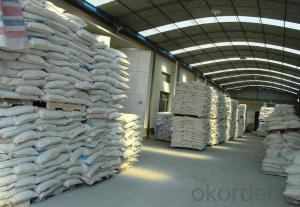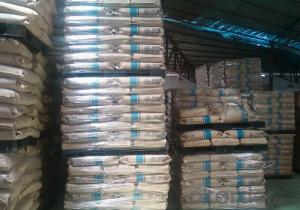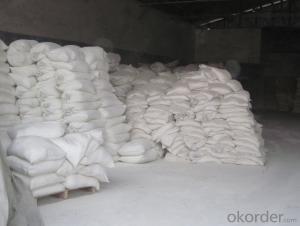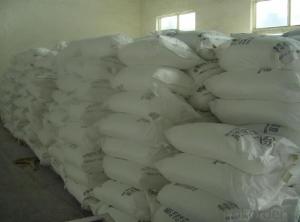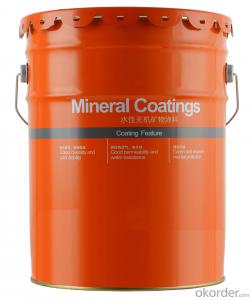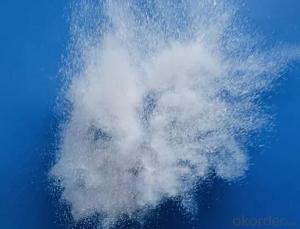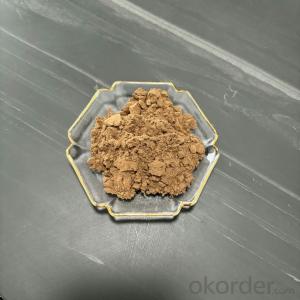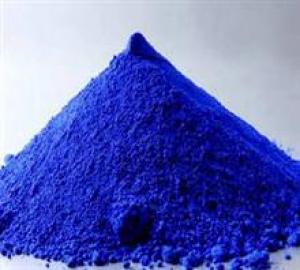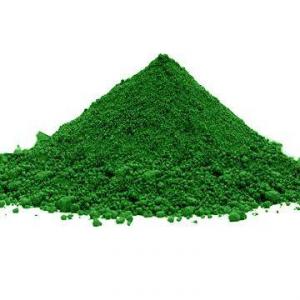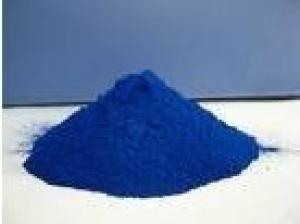White Lithopone ZnS-BaSO4 for paints,printing inks,coating,paper pigment,plastic,leather etc.
- Loading Port:
- Tianjin
- Payment Terms:
- TT OR LC
- Min Order Qty:
- 20 m.t.
- Supply Capability:
- 2000 m.t./month
OKorder Service Pledge
OKorder Financial Service
You Might Also Like
Specifications of Lithopone
Lithopone ZnS-BaSO4
1. zinc: 28-30%,30%
2. Uses:paints,printing inks,coating,paper pigment,plastic
3. ISO,SGS
4. 25kg/bag
Lithopone ZnS-BaSO4 :
1. Commodity:
Lithopone (ZnS-BaSO4) for paint ink plastic paper etc
--------------------------------------------------------------------------------------------------------------
2. Description:
Lithopone B301 is a kind of lithopone whose hiding power is better than that of zinc oxide and worse than that of titanium dioxide.It has good heat-resisitance and is insoluble in water.
White powder, is a mixture of zinc sulfide and barium sulfate. Have high whiteness and good covering power. It is called Inorganic white pigment. Widely used as white pigment of plastics such as polyolefin, vinyl resin, ABS resin, polystyrene, polycarbonate, nylon and polyoxymethylene (POM), also for paint and ink . it is use to colourate for rubber products , linoleum, leather, paper, enamel.
-----------------------------------------------------------------------------------------------------------------
3. Features:
1) A white pigment produced by precipitation through filtering,
heating and quenching works
2) Has mostly been replaced by titanium dioxide which is more
durable, but it is much cheaper
---------------------------------------------------------------------------------------------------------------
4. Application:
Mainly used of coatings, printing ink, rubber, plastic, powder, profiles, paint, paper, and leather, etc.
1) Used as a base for lake pigment
2) Used as a inert pigment for paint, ink and cosmetics
3) A large range of applications in plastic industry
4) Used as a filler in paper, leather, and linoleum
---------------------------------------------------------------------------------------------------------------
5. Packaging:
Packing:25kgs per bag or according customer's requirements.
--------------------------------------------------------------------------------------------------------------
6. Specifications:
| ITEM | SPECIFICATIONS |
Zinc oxide,% | ≤0.60 |
Total zinc(on zinc sulfide basis),% | ≥28 |
Quality standard | GBT1707-95 |
Tinting strength(Relative) | ≥105 |
Total zinc sulfide and barium sulfate | ≥99.0 |
Water soluble % | ≤0.40 |
Oil absorption,g/100g, | ≤14.0 |
Sieve residue 45um % | ≤0.10 |
Volatile at 105°C g/100g | ≤0.30 |
Color | Not lower than standard sample |
| Hiding Power(contrast ratio) | Not lower than 5% of standard sample |
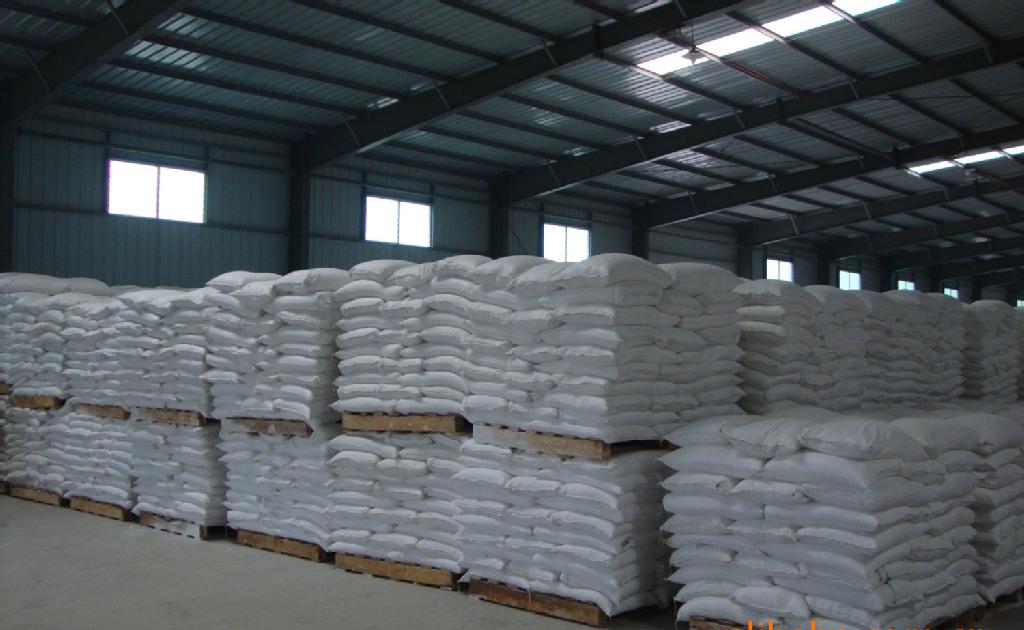
- Q:i bought the new neon pro pigments from mac , well 5 out of the six and i also bought 'basic red'i want to use these as eye shadows but i dont know howi also bought mac mixing medium for face and body but lol , i dont know how to use any of this stuffwhat can i do to use this stuff i mean will it turn out like regular eyeshadow if i use it right? will there be a shine to it? it will reduce fall out? should i put the mixing medium on my eye first , then let dry?do i need to possibly press the pigments in a pot with some kind of eye shadow liquid?i also bought the mascara mixing medium but want to know exactly what to do with thatand also , can i mix any of the pigments with lipgloss?http://cn1.kaboodle /hi/img/2/0/0/119/a/AAAAAlrx1LUAAAAAARmgiA.jpg
- Mac Pro Pigments
- Q:i want to get mac melon pigment but i dont know what other eyeshadows to pair and blend it with. im looking for an everyday look. also what brushes to use with pigments?
- With the Melon pigment, I would recommend using warm, chocolate copper, bronze types of colors. It will provide a nice contrast to the melon while giving your eyes some added depth and definition. As far as brushes go, I like using the 252, large shader brush. This brush picks up pigment nicely and it has nice compressed/dense bristles so you can manipulate and lay the pigment down with greater ease. I like the #286 The dual fiber blending brush for pigments as well. It's made of natural fiber and synthetic fiber. This is a great brush because you really get 2 brushes in 1. With this 'blending' brush you can also use it for targeted color deposits and the synthetic fibers won't suck up what you just laid down and you will get a flawless, beautifully blended eyeshadow application.
- Q:What pigments are used in photosynthesis?
- Chlorophyll(green) is the primary pigment used in photosynthesis. Besides chlorophyll, plants also use pigments such as carotenes(orange) and xanthophylls(yellow).
- Q:In photosynthesis whats the difference between primary and accesory pigments?
- Primary pigments are molecules that convert light energy to chemical energy directly; chlorophyll is the primary pigment in all photosynthetic organisms. Accessory pigments are molecules that absorb photons which are not captured by chlorophyll. The presence of accessory pigments (found in the thylakoid membranes of plants) allows phototrophs (plants, algae, and cyanobacteria) to capture energy from the sun that would otherwise go to waste. The two most common types of accessory pigments are carotenoids and phycobilins. Some examples of carotenoids in common plants are: beta-carotein (carrot orange), lutein (marigold yellow), and lycopene (tomato red). Phycobilins are found only in red algae or cyanobacteria. The two most common phycobilins are: phycoerythrin (red), and phycocyanin (blue). The presence of accessory pigments in plants is masked by the presence of chlorophyll during the Spring and Summer seasons; that's why leaves are green most of the time. The color change from green to red, orange, or yellow that we observed during the Fall season is caused by the absence of chlorophyll; the accessory pigments are always present until the leaves fall as the trees go into dormant mode.
- Q:how to prepare coloured pigments?
- Pigment does not might desire to do with pores and skin inevitably, a paint could be tinted with a pigment. curiously it is likewise a dry colorant, many times an insoluble powder. pores and skin colour is set by using the quantity of melanin in one's pores and skin, relative to ranges of exposure to the sunlight.
- Q:I need to know the classes and sub classes of pigments classification
- INORGANIC PIGMENTS Oxides Chromates Sulphides Sulphoselenides Sulphates Silicates Ferrocyandies Carbonates Metallic Mixed Metal Oxides Vanadates ORGANIC PIGMENTS Organic pigments are generally categorized into six types : ?Monoazo Pigments ?Diazo Pigments ?Acid and base dye Pigments ?Phthalocyanine Pigments ?Quinacridone Pigments ?Other polycyclic Pigments if you want more detail: ORGANIC PIGMENTS: 1.AZO Pigments : Monoazo Yellow and Orange Pigments. Disazo Pigments. β-Naphthol Pigments. Naphthol AS Pigments (Naphthol Reds). Azo Pigment Lakes (Salt Type Pigments). Benzimidazolone Pigments. Disazo Condensation Pigments. Metal Complex Pigments. 2.POLYCYCLIC Pigments: Phthalocyanine Pigments. Quinacridone Pigments. Perylene and Perinone Pigments. Diketopyrrolo–Pyrrole (DPP) Pigments. Thioindigo Pigments. Isoindolinone and Isoindoline Pigments. 3. Anthraquinone Pigments. Anthrapyrimidine Pigments. Flavanthrone Pigments. Pyranthrone Pigments. Anthanthrone Pigments. 4. Dioxazine Pigments. Triarylcarbonium Pigments. Quinophthalone Pigments
- Q:Explain light activation of pigments (absorption of light by pigments)?
- A pigment is a substance that imparts color by absorbing some frequencies of visible light but not others. For instance, there are a lot of substances that absorb ultraviolet light into the visible spectrum, in other words they also absorb plain violet light. Since they absorb violet light but reflect back the rest of light, they appear yellow. Purple pigments, on the other hand, are quite rare because they absorb purple light (which has the highest energy of visible light) and reflect back everything else. When anything absorbs a photon of electromagnetic radiation (light, x-rays, ultraviolet, infrared, microwaves, gamma rays, radio waves), it is activated which means that it takes the energy of the photon and goes to an energy state that is higher by the same amount of energy that was in the photon. At the molecular level, energy is quantized, meaning its restricted to particular states. For instance, vibrational energy corresponds to infrared light: there are only certain ways, called modes, that a molecule can vibrate in, if it can't vibrate in an appropriate mode, it can't absorb the infrared radiation that corresponds to being promoted to that mode. That's why substances can be transparent. At the higher energy state, the substance might be able to participate in chemical reactions that it would not be able to participate in in a lower state. That's usually what is meant by light activation. So a pigment that absorbs visible or UV light might become activated and react with something or react in ways that it wouldn't be able to in the dark.
- Q:What is better, Mac eye pigments or the regular eyeshadow? Also, has anyone tried the mixing medium solution?
- M.A.C pigments work really well. I have a few. And I haven't tried mixing medium solution.
- Q:Why do plants contain so many pigments?
- Typically most plants only contain chlorophyll which is green. Which plants are you referring to?
- Q:I have bought 2 Mac Pigment to use as eyeshadow,I thought it was supposed to be easy to use,turned out it wasn't.My eye looked like I got hit, so messy and the pigment was all over the place. I wonder if i should wet my brush or do u have some kind of tricks before applying it.Any advice would be appreciated.Thanks for helping.
- apply lightly and blow on your brush before you apply it to your face,this gets rid of all the excess so it doesnt fall down to your cheek
1. Manufacturer Overview |
|
|---|---|
| Location | |
| Year Established | |
| Annual Output Value | |
| Main Markets | |
| Company Certifications | |
2. Manufacturer Certificates |
|
|---|---|
| a) Certification Name | |
| Range | |
| Reference | |
| Validity Period | |
3. Manufacturer Capability |
|
|---|---|
| a)Trade Capacity | |
| Nearest Port | |
| Export Percentage | |
| No.of Employees in Trade Department | |
| Language Spoken: | |
| b)Factory Information | |
| Factory Size: | |
| No. of Production Lines | |
| Contract Manufacturing | |
| Product Price Range | |
Send your message to us
White Lithopone ZnS-BaSO4 for paints,printing inks,coating,paper pigment,plastic,leather etc.
- Loading Port:
- Tianjin
- Payment Terms:
- TT OR LC
- Min Order Qty:
- 20 m.t.
- Supply Capability:
- 2000 m.t./month
OKorder Service Pledge
OKorder Financial Service
Similar products
New products
Hot products
Related keywords

